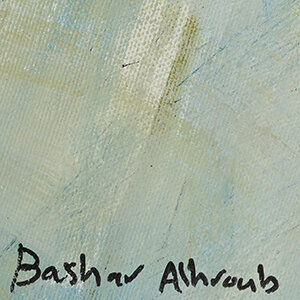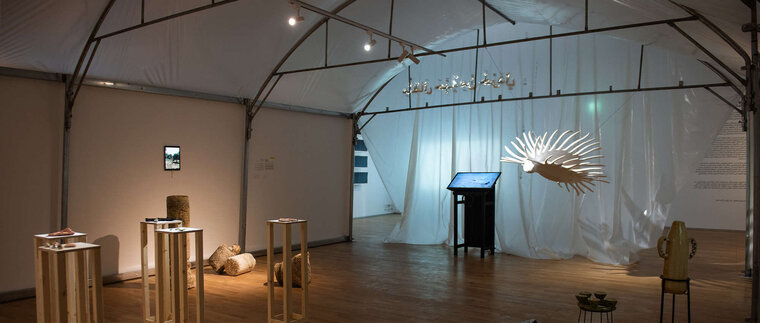


Last updated on Tue 1 September, 2020


Weed Control
1 September - 1 December 2020
A. M. Qattan Foundation Cultural Centre
Ramallah, Palestine
Curator: Yazid Anani
With the participation of 33 artists
On 16 January 1940, a letter addressed to Mr. Masson, Chief Agricultural Officer at the Department of Agriculture and Fisheries in British Mandate Jerusalem, described a bizarre travelling exhibition in Palestine of weeds and seeds accompanied by lectures on methods of weed control. Enclosed with the letter was a souvenir: illustrations of the weeds and seeds most common in Palestine with their scientific names.
The letter and photos are part of a British Mandate document entitled “Control of Weeds (Including Experiments),” containing more than 45 letters to the Department of Agriculture and Fisheries from all regions in Palestine on issues related to weeds and the harm they inflict. A large share of the correspondence features copies of scientific research carried out between Britain and Mandate Palestine, in particular by the Imperial Chemical Industries. The research shared statistics and field experiments on methoxone and other chemicals to curb crop weeds and control their growth and propagation.
This exhibition explores the transition in the perception of Palestinian flora and its historical ecological habitus in the lives of Palestinians, particularly with the emergence of early agro-industries during the British Mandate and the birth of intensive crop farming. The long history of permaculture agro-practices went through an upheaval in which Palestinian flora was no longer perceived from a utilitarian, economical or agronomical stance. The medicinal, mythical, folkloric/household usage and ecological (propagation, pest repellence, nutritional, etc.) domestic knowhow of plants was rendered inapt with the emergence of new industrial values. The Western scientific taxonomy of plants suddenly classified many domestic species as harmful weeds, to which they introduced pesticides and other new methods of control alongside awareness campaigns and publications. The repercussions of this historical turning point have echoed into the present. Knowledge of plants as part of the identity of the geography and people of Palestine has been limited to a utilitarian thesis.
Thirty-three artists were given 33 seeds based on the illustrations of the most common weeds in Palestine, part of the 1940 travelling exhibition. Each artist was asked to scrutinise the botanical anatomy of their given plant and turn the seed into an artwork that subverts the British colonial and industrial value of the seed into a more personal, mythical or poetic one. An accompanying book that compiles texts and illustrations was created with the exhibition, its material rooted in the research conducted by artists and other local writers and thinkers.
Participating artists
Jumana Emil Abboud, Majd Abdel Hamid, Alaa Abu Asad, Mohammad Abu Sal, Bashar Al Hroub, Jawad Al Malhi, Nabil Anani, Ayed Arafah, Rafat Asad, Mirna Bamieh, Mahdi Baraghiti, Tayseer Barakat, Essa Grayeb, Haitham Haddad, Inas Halabi, Alexandra Sophia Handal, Dima Hourani, Khaled Jarrar, Randa Maddah, Manal Mahamid, Jumana Manna, Suleiman Mansour, Abd Al Rahman Julani, Assem Nasser, Hanna Qubty, Shada Safadi, Amer Shomali, Nasser Soumi, Dima Srouji, Vera Tamari, Oraib Toukan, Ola Zaitoun, Ronen Zien
Curator: Yazid Anani
Coordination: Ahmed Yasin
Technical support: Diaa Jubeh, Khalid Fanni, Science Studio
Join us in our endless discovery of modern and contemporary Arab art